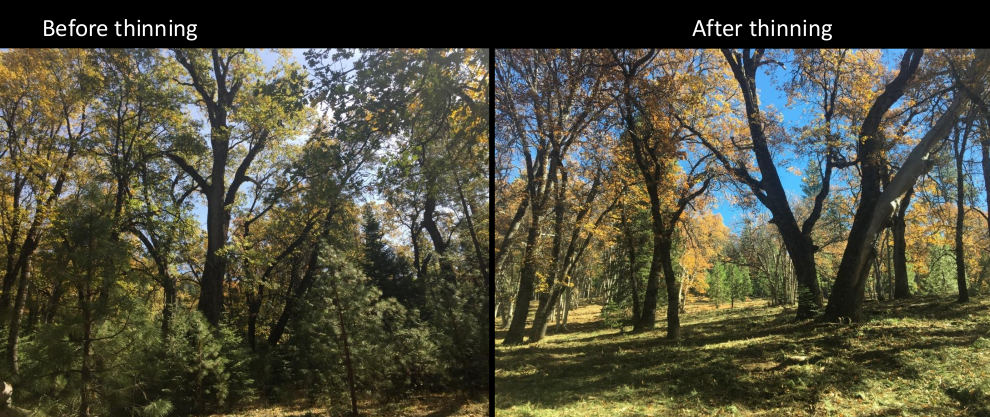MCBA Magazine
Announcing the new MCBA Magazine! Inside our 2023 addition, you will find articles from us, our members and so much more! Read about the journey of becoming a new hunter. The profile of Jack Booth, our resident Biologist. Enjoy photos from past banquets and a message from Paul Trouette, President.
Take a look at our new Blacktail News magazine
The MCBA 2024 Magazine is here! Our new edition has an important message from the MCBA president Paul Trouette. Read about longtime CDFW Scientist David Casady and his plans as advisor to MCBA. You can also enjoy photos from this year's banquets and more! magazine
News
SB 252 Defeated!
Due to the support of hunters and other concerned citizens, the bill banning bear hunting in California has been shelved. Thanks to all of you who contributed a signature to the petition opposing it, and made your voice heard.
More info here:
https://www.gohunt.com/read/news/california-sb-252-to-ban-bear-hunting-withdrawn-as-over-27000-sign-petition#gs.qib34v
In an effort to create better conditions for blacktailed deer, The MCBA, in cooperation with BLM, the Mule Deer Foundation, and the Glenn County RAC, have worked to thin out underbrush in the Mendocino National Forest near Covelo. This project is known as the "Baseball Wildlife Habitat Improvement, Protection & Fuels Reduction Project", or "Baseball" for short. MCBA donated $85,000 towards the project.

More info can be found on our
Current Projects page, or at the following link:
https://www.fs.usda.gov/detail/r5/landmanagement/?cid=fseprd603537
MCBA lawsuit prevents adoption of flawed marijuana cultivation ordinance
On May 17th, the Mendocino County board of Supervisors approved an "urgency ordinance" with minimal notice over the protest of MCBA alleging non-compliance with the California Environmental Quality Act (CEQA).
The ordinance allowed those who could prove prior commercial pot-growing to apply for up to 99 plants per grow site in virtually any land use zoning in Mendocino County. This would have created potentially 10,000 active businesses in areas not zoned for such activities. No studies of dirt roads, grow site excavation, sedimentation, displacement of wildlife, or potential breakups of existing parcels to create even more grow sites were done. The Supervisors declared no environmental impacts would occur. MCBA disagreed.
On June 6th, MCBA sued, demanding the county cease accepting applications under this ordinance. Rather than punish citizens who had applied in good faith, MCBA proposed that they serve as a trial group for compliance. We also required that the county not issue any further marijuana regulations without complete CEQA review.
At its next regular meeting, the Board of Supervisors granted all demands.
Although successful in slowing things down in favor of some common sense regulation, other factors will shape the conversation in the near future.
- The State of California is in the process of writing marijuana regulations for the handful of state agencies tasked with bringing order from chaos in this field. These regulations are optimistically scheduled for release on January 1, 2018. The State has been notoriously tardy in meeting such deadlines in the past.
- The November 2016 ballot contains several marijuana initiatives. The Adult Use initiative seems to have support for legalizing recreational use of marijuana.
- The federal government is toying (as it has for decades) with the concept of listing marijuana as a Schedule 3 drug (relatively harmless intoxicant) instead of the current Schedule 1 listing (on a par with heroin and cocaine.
- The State of California is considering increased funding for law enforcement related to marijuana.
MCBA will remain vigilant in protecting our vital resources. In addition to the highlights above, we feel that the hidden agenda of amending our General Plan without due process, and the 99 plant allowance (using hoop houses a grower can complete 4 "seasons" or grow almost 400 plants annually) under current regulations, at least deserves an analysis for environmental impacts before permanent regulation is proposed.
News stories and documents about the urgency ordinance, lawsuit and outcome:
Paul's March 16 address to the Board.
Sheriff Enforcement Guidelines (The Willits News)
News story about the lawsuit filing (The Press Democrat)
News story about the settlement (The Press Democrat)
More in-depth coverage from Willits Weekly (Part 1, Page 1, Page 13)
More in-depth coverage from Willits Weekly (Part 2, Page 1, Page 13)
Background on CEQA
A Summary of the California Environmental Quality Act (CEQA)
(California Public Resources Code, Sections 21000 - 21178, and Title 14 CCR, Section 753, and Chapter 3, Sections 15000 - 15387):
The California Environmental Quality Act (CEQA) is California's broadest environmental law. CEQA helps to guide the Department during issuance of permits and approval of projects. Courts have interpreted CEQA to afford the fullest protection of the environment within the reasonable scope of the statutes. CEQA applies to all discretionary projects proposed to be conducted or approved by a California public agency, including private projects requiring discretionary government approval.
The purpose of CEQA is to:
- Disclose to the public the significant environmental effects of a proposed discretionary project, through the preparation of an Initial Study (IS), Negative Declaration (ND), or Environmental Impact Report (EIR).
- Prevent or minimize damage to the environment through development of project alternatives, mitigation measures, and mitigation monitoring.
- Disclose to the public the agency decision making process utilized to approve discretionary projects through findings and statements of overriding consideration.
- Enhance public participation in the environmental review process through scoping meetings, public notice, public review, hearings, and the judicial process.
- Improve interagency coordination through early consultations, scoping meetings, notices of preparation, and State Clearinghouse review.
California Public Resources Code Sections 21000-21004 generally state that:
- State agencies shall regulate the activities of private individuals, corporations, and other public agencies whose activities may affect the environment shall regulate to prevent environmental damage.
- Government agencies shall develop standards and procedures necessary to maintain, protect, rehabilitate and enhance environmental quality, including fish and wildlife populations and plant and animal communities.
- Projects carried out by public agencies shall be subject to the same level of review as private projects requiring approval by public agencies.
- No projects which would cause significant environmental effects should be approved as proposed if there are feasible alternatives or mitigation measures that would lessen those effects.
- Environmental impact reports (EIRs) shall be used to provide full public disclosure of the environmental impacts of a proposed project.
- EIRs shall include identification of all significant effects, alternatives, and potential mitigation measures.
- Local agencies should integrate CEQA with other environmental review, planning, and information gathering so as to cut costs and time and to apply the conservation of financial, governmental, physical, and social resources towards better mitigation.
- Identification of significant effects, alternatives and mitigation measures, as well as comments from the public and public agencies, and relevant information about significant effects should be made as early as possible in the process.
Failure to comply with CEQA to provide full disclosure of information during the CEQA process, which would result in relevant information not being presented to the public agency, would constitute prejudicial abuse of discretion leaving the project proponent open to possible lawsuits.
Interagency task force cleans up Marijuana Grow
A major illegal marijuana grow operation was cleared out and cleaned up in the Humboldt Redwoods State Park on May 9th. Among the many agencies involved, LEAR Asset Management and volunteers from the MCBA helped clean up the grow site. There was substantial coverage of the cleanup in several news outlets:
MCBA continues to strive towards practical ways of improving our public land deer herds,
and address the problems associated with our deer decline. One of the biggest problems facing us now is trash,
as well as poisons that affect our herds in our wildlands from illegal tresspass grow operations -
not to mention the overwhelming amount of people traffic from these sites that push our deer out of their normal summer ranges.
We are removing these infrastructures with the support of law enforcement through grants from various agencies to improve forest health for our deer.
Removing these sites allow our deer to rest, and the ability to move back in to their desired summer ranges again.
To volunteer on one of these projects feel free to call 707-354-1652, or 707-489-9663.
Black Butte River Habitat Restoration Project.
After talking with District Ranger Lee Johnson and Upper Lake
District Coordinator Terry Nickerson, our Black Butte River
Drainage Project is tentatively being slated for the fall of
2011 (final decision expected in august).
This project is designed to treat with fire the old
decadent chaparral and browse species; and reduce the noxious
weeds in the winter grasslands, so that the deer will have new
forage. We will be burning in a yearly rotational pattern from
the Clifton Ridge area, north towards Indian Dick area.
There are thousands of acres that need treatment, and MCBA
targeted these areas as a much needed project. MCBA is planning
on contributing upwards of $ 10,000.00 plus in 2011 -- and more
in subsequent years to come -- to this project. The USFS also is
contributing funding to help with habitat enhancement. USFS
Ranger Lee Johnson has been a very supportive component to
getting our project off the ground, Terry Nickerson has also been
very instrumental in drafting the projects nuts and bolts.
Thanks,gentlemen; and thanks to MCBA members.





